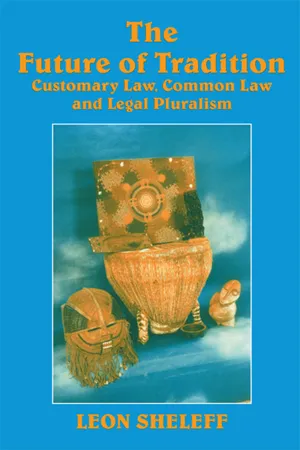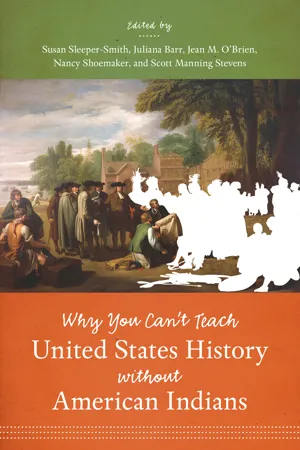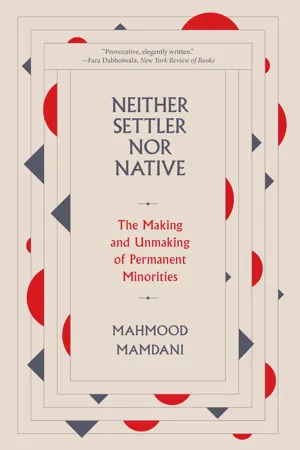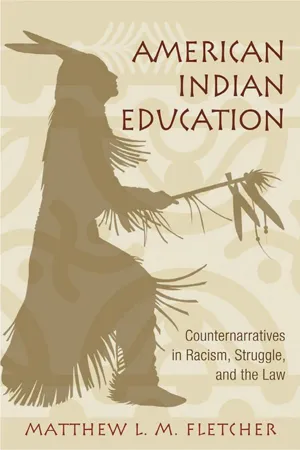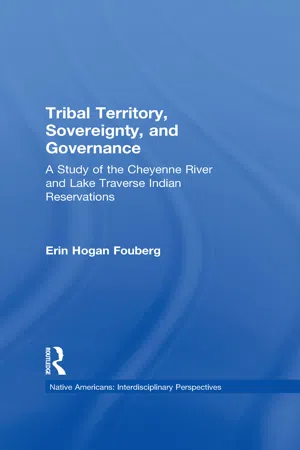History
Indian Civil Rights Act
The Indian Civil Rights Act, enacted in 1968, aimed to protect the civil rights of Native Americans living on reservations. It provided certain protections similar to those in the U.S. Bill of Rights, such as freedom of speech, religion, and assembly, as well as due process and equal protection under the law. The act also affirmed tribal sovereignty and self-governance.
Written by Perlego with AI-assistance
Related key terms
6 Key excerpts on "Indian Civil Rights Act"
- eBook - ePub
The Future of Tradition
Customary Law, Common Law and Legal Pluralism
- Leon Shaskolsky Sheleff(Author)
- 2013(Publication Date)
- Routledge(Publisher)
Martinez. 23 Here too, selective and special legislation, the 1968 Indian Civil Rights Act, 24 was a key factor – this was legislation aimed at introducing civil rights factors into the legal structure of tribal life. However, while many authorities presumed that this legislation would contribute to advancing civil rights in general among the Indians, Vine Deloria and Clifford Lytle comment that ‘unfortunately, none of the legal scholars anticipated that the act would become embroiled in a very difficult case that involved two explosive contemporary issues: the status of women within the tribe and the right of a tribe to determine its own membership’. 25 The issue here was almost identical to that which had arisen in the Lovelace case in Canada – the right of women to retain their membership in a tribe if they marry outside of the tribe, when male members doing likewise were not deprived of membership. However, while general issues of civil rights were relevant and specific issues of gender discrimination were involved, the key factor in dispute was who had the right to determine tribal membership. The Supreme Court held that it was limited in its ability to intervene because of the special nature of tribal government, the one noted exception stipulated in the act being for a habeas corpus petition in the case of unlawful imprisonment - Susan Sleeper-Smith, Juliana Barr, Jean M. O'Brien, Nancy Shoemaker, Scott Manning Stevens, Susan Sleeper-Smith, Juliana Barr, Jean M. O'Brien, Nancy Shoemaker, Scott Manning Stevens(Authors)
- 2015(Publication Date)
- The University of North Carolina Press(Publisher)
and Clifford M. Lytle’s The Nations Within: The Past and Future of American Indian Sovereignty. Chapters within this text, however, contain a more sophisticated approach to understanding the distinctions and include some detailed policy analysis that U.S. history survey students might find challenging. With that said, the text does offer an insightful and informative perspective on how civil rights dominated policy decisions and affected American Indians fighting for sovereignty rights. For example, Deloria and Lytle explained how the 1968 Indian Civil Rights Act—a title that will naturally imply a positive outcome to students—actually threatened aspects of tribal sovereignty. “The Indian Civil Rights Act (ICRA),” Deloria and Lytle wrote, “radically changed the substance of tribal courts. It incorporated the First Amendment and Fourth through Eighth Amendments into a package of enumerated rights that tribal governments were forbidden to abridge.” 14 As Deloria and Lytle explained, “The Indian Civil Rights Act transforms the aboriginal sovereignty by objectifying it in institutions designed by non-Indians.” 15 Presentation of such arguments will begin to help students understand the distinctions between sovereignty rights and civil rights as rights of a separate nation from those of individuals within a nation, respectively- eBook - ePub
Neither Settler nor Native
The Making and Unmaking of Permanent Minorities
- Mahmood Mamdani(Author)
- 2020(Publication Date)
- Belknap Press(Publisher)
Santa Clara Pueblo v. Martinez (1978), bluntly denying that ICRA violations are subject to federal remedies. The ICRA can only be enforced in tribal forums.The ICRA’s omissions can be read as culturally sensitive efforts to allow Indians to maintain tribal traditions, such as their court procedures and the quasi-theocratic practices in place at some reservations.106 But these traditions are not actually traditional; they refer to colonial tools of indirect rule, whereby settlers instrumentalized what they claimed to be Indian traditions. What is protected as tradition is actually colonial customary law.107Not only these so-called traditions but also the protectors signal wardship. Indian self-governance is like the tribal self-governance of the South African Bantustans I discuss in chapter 3 : it may look like self-rule, but it is carried out under the eye of a settler state. Reservations do not have representation in Congress; instead they have an authority—tribal government—that represents the tribe to the BIA. Usually this tribal government is elected, but this is not enough. The authority must be approved by the secretary of the interior. The outcome is a hybrid combining features of democracy, autocracy, and standard-fare colonial bureaucracy. The chief executive of a tribe presides over its legislative body and executive branch; most tribes have no judicial branch. Decisions of tribal authorities must be approved by the secretary of the interior before they can be acknowledged as laws. The BIA provides funding—just enough development and security dollars to keep tribal governments on life support—while otherwise trying to do everything on its own: from building roads and dams to fighting fires and administering probate.108 - eBook - ePub
American Indian Education
Counternarratives in Racism, Struggle, and the Law
- Matthew L. M. Fletcher(Author)
- 2010(Publication Date)
- Routledge(Publisher)
G. Robert Johns : As this Court noted in the seminal case, Jones v. Alfred H. Mayer Co. in 1968,72 it doesn’t matter if a statute has lain dormant for decades. The statute says what it says and that should be the end of the matter.Justice Blue : I recall that Senator Trumbull, the Congressional champion of the 1866 Civil Rights Act, only intended the statute to apply to African-American persons. Back then, there was no discussion of Indians ever being citizens.73G. Robert Johns : Ah, yes, but the legislative history is inconclusive. It is clear that the Warren Court and later cases expanded the application of Section 1981 to other races and even to illegal immigrants.Justice Blue : But not to American Indians.Chief Justice Violet : In fact, if Congress believed that Section 1981 applied to American Indians, it would make little sense to adopt the Indian Civil Rights Act in 1968 to extend civil rights protections to American Indians.74G. Robert Johns : Well, as the Court knows, the Indian Civil Rights Act is a toothless statute after Santa Clara Pueblo v. Martinez ,75 with no way for civil rights petitions to ever reach federal court to vindicate their rights.Chief Justice Violet : But that’s a non sequitir. Congress did pass the statute, one that would have been redundant if Section 1981 applied to Indian tribes. Moreover, Congress has never amended the Indian Civil Rights Act to authorize federal court review. It would appear that Justice Marshall’s opinion that a tribal forum is adequate to vindicate civil rights and enforce the statute was persuasive and continues to be so.76G. Robert Johns : And yet Indian tribes continue to violate the civil rights of both Indians and non-Indians.Justice White : I guess that begs the question, doesn’t it?G. Robert Johns - eBook - ePub
- Deloria Vine, Clifford M. Lytle(Authors)
- 2010(Publication Date)
- University of Texas Press(Publisher)
Talton v. Mayes, 163 U.S. 376 (1895), the powers of local self-government as exercised by Indians existed prior to the Constitution and neither were created by nor sprung from the Constitution. Hence, Indians have the power to define their own offenses and prosecute those who violate tribal laws without complying with the dictates of the U.S. Constitution.While immune from the reaches of the federal Constitution, tribal prosecutions do fall under the auspices of the 1968 Indian Civil Rights Act. This “Indian Bill of Rights” has made applicable most, although not all, of the provisions expressed in the first eight amendments to the U.S. Constitution. Ten of these provisions are directed toward protecting the rights of Indians accused of committing crimes on the reservation. They include protections against or guarantees ofUnreasonable searches and seizures Speedy and public trial Confrontation and cross-examination Right to retained counsel Cruel and unusual punishment Double jeopardy Trial by jury No excessive bail Due process of law Self-incriminationThe Due Process Clause of the 1968 act undoubtedly includes a number of fundamental procedural guarantees as well, although tribal courts have yet to define these specifically. Adequate notice of hearing, impartial judges, laws possessing an ascertainable standard of guilt, and a fair accusatory procedure are all procedural prerequisites designed to assure that an Indian defendant is afforded a fair trial.Even though the 1968 Indian Civil Rights Act imposed these libertarian guarantees on tribal criminal proceedings, the practical implementation of the act has been more symbolic and looking toward the spirit of the law than a rigid application of the letter of the law. Take, for example, the right to counsel provision. Under federal and state laws, a defendant is afforded the right to counsel whether or not he or she can afford one. Under the Indian Civil Rights Act, an Indian defendant is permitted right to counsel only if he or she can afford to hire an advocate and an attorney. Furthermore, in many tribal court proceedings, the advocate-attorney defense team is expected to participate in the resolution of the problem and not to raise technical procedural points used in federal and state courts to free guilty defendants. The spirit of the law is maintained but the technical battles that characterize non-Indian courts and sometimes lead to a sense of outrage in non-Indian society are usually not present. Rigid application of the constitutional protections in tribal courts might well hamper the ability of the judiciary to function as it has. Tribal courts might well become as complicated as have the lower federal courts with cases waiting for years before they are resolved. - eBook - ePub
Tribal Territory, Sovereignty, and Governance
A Study of the Cheyenne River and Lake Traverse Indian Reservations
- Erin Fouberg(Author)
- 2018(Publication Date)
- Routledge(Publisher)
In 1978, Congress passed the Indian Child Welfare Act. This program gives tribal governments a role in deciding child custody and adoption cases involving children who are members of a tribe. No matter where a case involving an Indian child is being heard, the Indian Child Welfare Act requires notification of the child’s tribe. The Indian Child Welfare Act assures that “child-custody proceedings involving Indian children on reservations are to be within the exclusive jurisdiction of Indian courts.” 9 Congress also passed the Indian Religious Freedom Act in 1978 to recognize and protect Indian religious traditions. This act, coupled with the Indian Child Welfare Act, represents a direct repudiation of the assimilation policies of the past. The acts ended the practices of suppressing Indian religion and of taking Indian children for adoption by non-Indians. Unfortunately, these acts did not achieve the same level of success. The Indian Child Welfare Act has been successful at maintaining tribal sovereignty over Indian child welfare. On the other hand, the Indian Religious Freedom Act has not successfully protected traditional Indian religious practices. 10 Congress passed other legislation that recognized Indian tribal sovereignty over a variety of subjects during the 1970s. With respect to several environmental issues, Congress and the Environmental Protection Agency have treated the tribes as they do the fifty states. Tribes control enforcement over several federal environmental programs on their reservations
Index pages curate the most relevant extracts from our library of academic textbooks. They’ve been created using an in-house natural language model (NLM), each adding context and meaning to key research topics.
